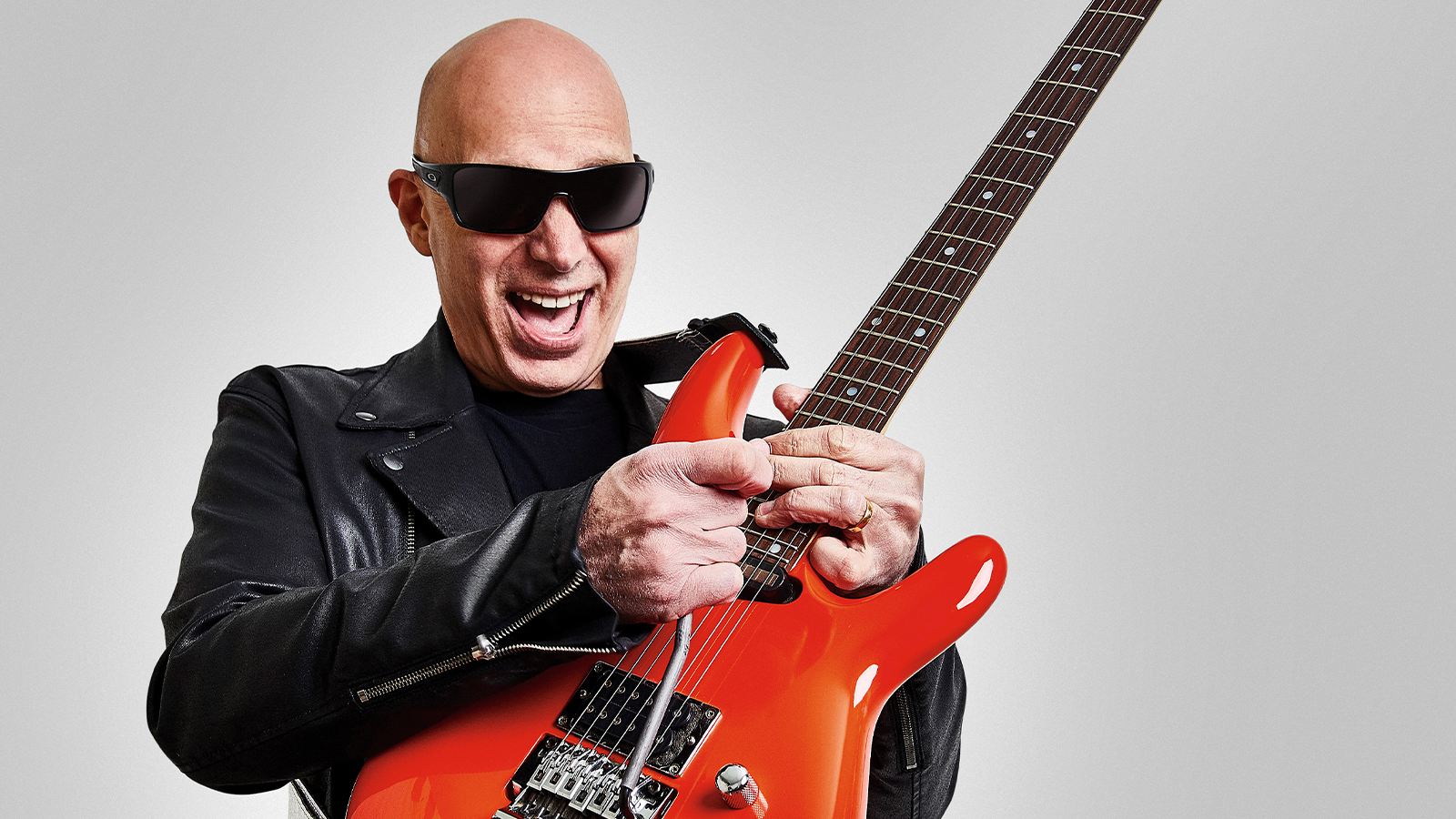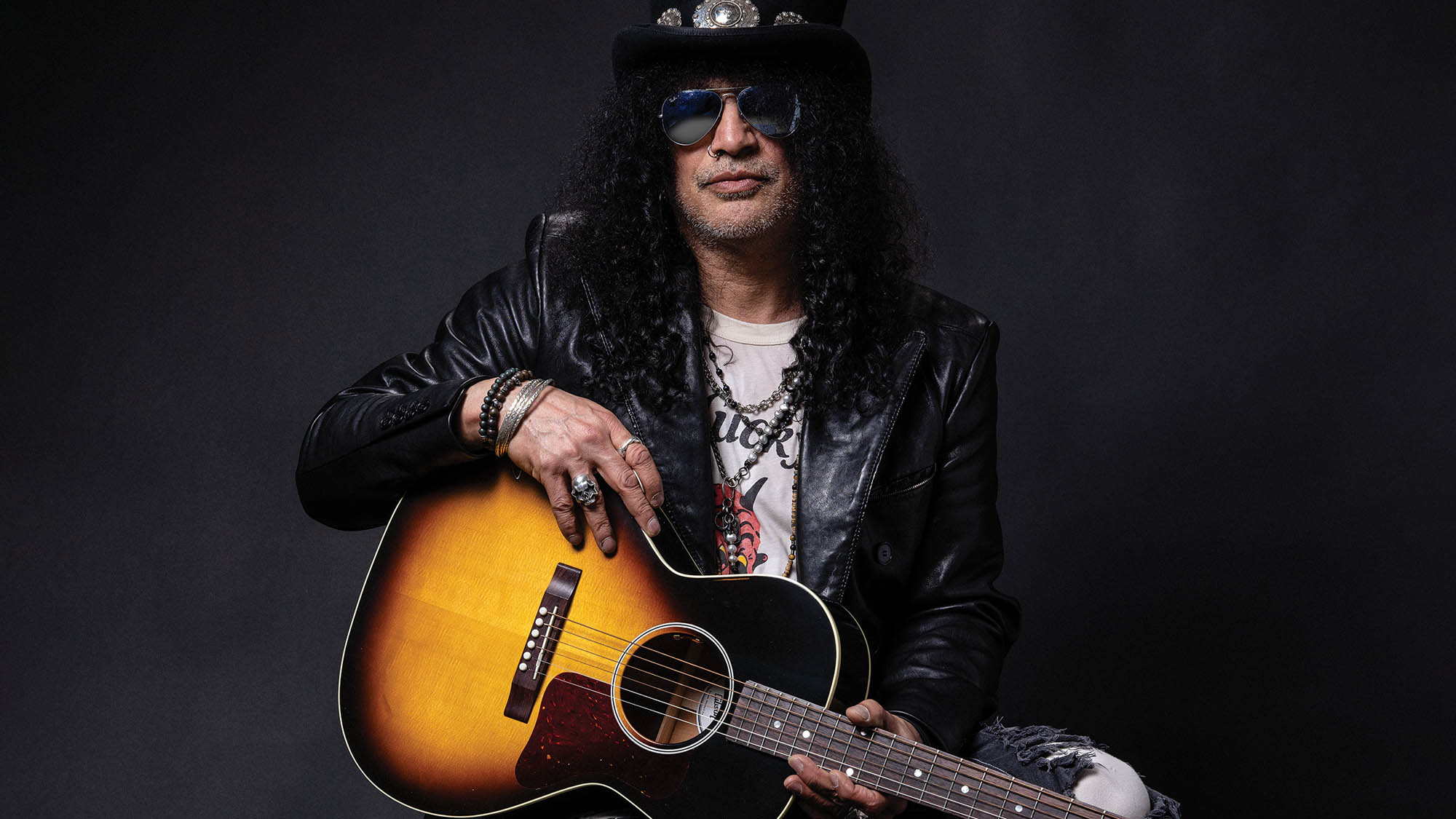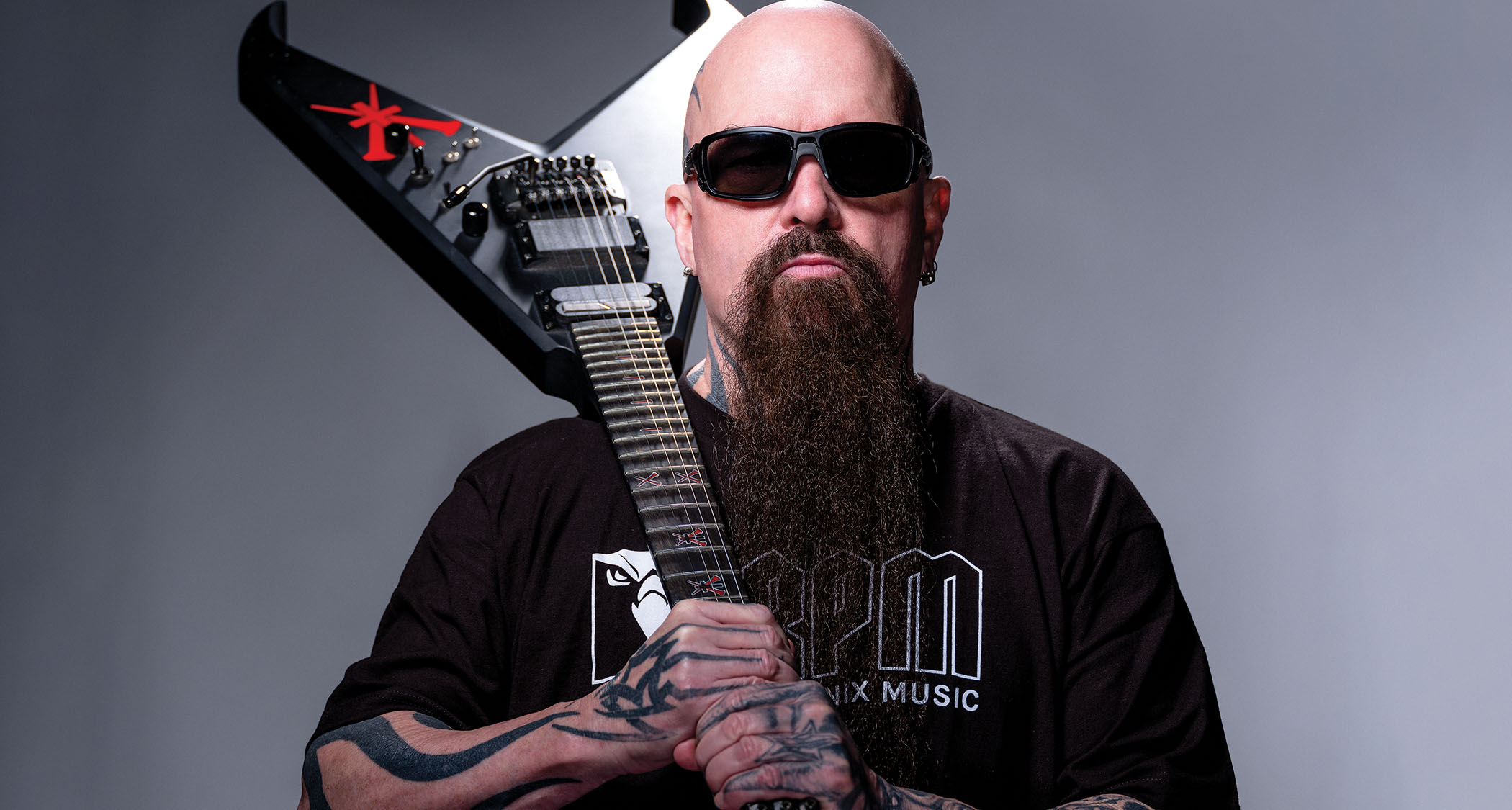
Okay, it’s time to run the ticker tape: we’re paying tribute to the guitar players who made 2024 their own. Whether on the acoustic guitar or pushing the envelope on a high-performance electric guitar, these are the players who stopped us in our tracks.
And while there are some familiar faces – two of which made this past year the one in which they finally collaborate on record after decades of friendship – there are a lot of players who are just coming to our attention now, and others who are only at the start of their guitar-playing journey.
In other words, there are signs that the future will be blessed with the talent we need to take guitar-playing forward, inspiring us all in the process.
Joe Satriani

Joe Satriani did more in one year than most players do in a lifetime, starting out with the G3 Reunion Tour alongside the original 1996 lineup of Eric Johnson and Steve Vai, playing shows that would’ve been the highlight of any other year.
But not when Satch also announced that he and Vai were touring and making music together, releasing their first single, The Sea of Emotion, Pt. 1, in March, sharing a GW cover and having big fun onstage. And definitely not when it was confirmed that Satch was going to be performing a de facto tribute to Eddie Van Halen on Sammy Hagar’s Best of All Worlds Tour.
After all the hoo-ha about the EVH tributes, this was a chance for one great to pay homage to the G.O.A.T., and Satriani approached it with his trademark humility. He got serious. First, fretting about the tone, he developed an all-new tube amp with 3rd Power to replicate Eddie’s Live Without a Net-era sound. Then he sweated the playing.
Performing Mean Streets on The Howard Stern Show without a rehearsal was a baptism of fire. Everyone had an opinion. But he did what the greats do; they get in the room and practice, and when the shows came around, no-one was mistaking Satch for Eddie Van Halen – but they sure could’ve been mistaken in thinking this was easy, because he made it look like a fun jam with friends, which is kind of what 2024 was for Satriani. Which brings us to Mr. Vai…
Steve Vai
As it goes with Joe, so it does with Steve, and although Vai didn’t need a custom-built amp to play Van Halen night after night, he did have his own musical Everest to scale.
Once he had fulfilled his post-G3, post-Satch/Vai commitments, it was time to tour with Beat, reimagining King Crimson classic albums in the company of Crimson alumni Adrian Belew and Tony Levin, with Tool’s Danny Carey on drums.
The Beat tour is a big deal – 65 dates across the States – and a heavy lift, with a set culled from King Crimson’s Discipline, Beat and Three of a Perfect Pair, all performed for a fanbase who expects perfection. Vai wouldn’t have it any other way.
“When the opportunity to do this gig was presented to me, I saw myself on the stage in my minds-eye and I knew it would be good,” he wrote on Instagram.
“But the way it is turning out for me has surpassed my expectations… I feel so comfortable being on this stage playing this absolutely superb music and being a part of something that offers the fans of this music an opportunity to hear it live after over 40 years of its release.”
Slash

This year, Slash’s Rolodex was every bit as important to him as a Gibson Les Paul or Magnatone amp, with the Guns N’ Roses guitarist leveraging all his convening powers for the all-star blues album Orgy of the Damned – before repeating the trick and launching the touring S.E.R.P.E.N.T. Festival to make money for good causes and take the art form nationwide.
Orgy was an opportunity to show the world a side to his playing that we hadn’t seen since the ’90s (via his Blues Ball live project), and yet you don’t need to dig that deep into Slash’s back catalog to find examples of blues phraseology – the influence has always been there.
He had been wanting to do some of the Orgy tracks since forever – Killing Floor being one of them. “It’s always been one of my favorite guitar riffs of all time,” he told GW. His high-energy shakedown of the Howlin’ Wolf standard – with AC/DC’s Brian Johnson barking lava into the mic – showcased an ease with this material.
The GN’R guitarist freshened up the rotation for Orgy, predominantly playing through a Magnatone M-80 combo and breaking out his 1963 ES-355. The Gibson brand ambassador even switched codes to use a Fender Telecaster on a bravura take on Stevie Wonder’s Living for the City and a Strat on Peter Green’s Fleetwood Mac standard Oh Well.
Green and fellow Bluesbreaker alumni Eric Clapton are primary inspirations, but as Slash argues, the O.G. trailblazers remain unsurpassed.
“My favorite British guitar players are amazing, but they all pale in comparison to the original guys, because that was their own personal technique, from its origin, and everybody after that was just picking up on it and taking it somewhere else,” he said.
“Those early blues guitar players from the ’50s and ’60s – and, of course, it goes further back than that – there was a thing there that was just raw and amazing and unique.”
Adrian Belew
On the momentous occasion of the Stratocaster’s 70th birthday (another big 2024 event), Adrian Belew had a revelation for Guitar World. He was the owner of the world’s first relic’ed guitar, and Seymour Duncan did the relic’ing.
It goes back to a “brown sunburst” Strat Belew bought in Nashville for $285, a bargain. But it had an “ugly-ass” finish. Duncan knew just what to do.
“He got in the trunk of his car and took out all these things – files and a screwdriver and spray paint and lighter fluid,” Belew said.
“He laid it on the lawn, and before I could say anything, he took the lighter fluid out and squirted it on the face of the guitar and set it on fire… It looked just like the beginning of Bonanza.” That was only the beginning. Screwdrivers came out. It got dragged around. Belew applied spray paint, and guitar history was made.
As for Belew the player? We’ll leave that to Vai, who has witnessed it up close on the Beat tour: “I have never heard anyone even in his neighborhood when it comes to his creative mastery of guitartronics. I watch and listen to him take solos and find myself giggling in disbelief.” And, as we see it – no Belew? No Beat tour!
Dave Navarro
There’s no need to go all Judge Judy here on what went down on that fateful Friday, September 13, in Boston, as the Jane’s Addiction reunion imploded. We’ve all seen the fan-shot footage, the alt-rock Zapruder film duly uploaded to YouTube. Perry Farrell took a pop at Dave Navarro. Everyone has had their two cents. He says. She says. Jane says.
Well, it’s done now. That Navarro managed to take part at all in the reunion is testament to his character, having contested with the grief of losing his friend in Foo Fighters drummer Taylor Hawkins, and still to fully recover from the effects of Long Covid. The tour began with Troy Van Leeuwen, then Josh Klinghoffer in his place.
Navarro said it was tough sitting out the opening months. “I love both of those guys, and I was fine with that, but it was hard not to be with my original band,” he said. After Hawkins’ death, he didn’t pick up a guitar for a year. He soon made up for lost time.
“I spent most of my days during my illness just kind of woodshedding guitar and relearning things,” he said. “I played Jane’s Addiction records front to back and tried to relearn things I’d played in the ’80s and ’90s that I’d forgotten. That was a challenge, and that was fun.”
Who knows what’s next, but Navarro has emerged a better player, “a little bit more confident” of his abilities. He’s available for hire.
Gary Clark Jr.
There is much to be said for personal development and the wisdom that comes with life experience; but this shouldn’t come at the expense of the inner-child – not if you want to retain that sense of play that animates the creative impulse. That’s the lesson we took from Gary Clark Jr. and his radical reinterpretation of blues guitar on his 2024 album, JPEG Raw.
There was a fork in the road where I could have headed toward blues or shred. I chose blues
Gary Clark Jr.
“What felt different about this record is that I kinda went back to my 12-year-old self,” he said. “There was a fork in the road where I could have headed toward blues or shred. I chose blues and ended up being the kid at those jam nights with that same Ibanez Blazer and a 60-watt solid-state Crate.”
Clark’s last four years have seen a reunion with Ibanez guitars and the Floyd Rose vibrato. “I went crazy on distortion, chorus and delay, going nuts in my studio for hours and hours every day. “That was the approach for this album. I was being a full-on musician and not sticking to one style.”
As such, you won’t find him solely administering I-IV-V shuffles in 12/8, but the blues is still coming from the same place – the gut.
“It wasn’t cool to know music theory when I was growing up; it was about the feeling,” Clark said. “I’d ask all the other players and they’d say, ‘All you need is three chords and the truth!’ So that’s just what I lived by – the pentatonic scale with a little bit of soul.”
Joe Perry and Brad Whitford
Had things gone according to plan, we’d be basking in the afterglow from one of the valedictory shows on Aerosmith’s Peace Out: The Farewell Tour or draining some cold beers in anticipation of one. But frontman Steve Tyler’s voice has finally given out, and the band have retired from touring. Bassist Tom Hamilton sounded a note of hope about an album, but it’s the hope that kills you.
What we do have is 50-plus years of louche, libidinous, often epic, always inventive rock ’n’ roll. The reflections of the band’s guitarists Joe Perry and Brad Whitford in Guitar World last year offer a compelling commentary on the Boston institution’s story – the guitars, the fall-outs, the secrets behind its success.
Part of the secret is how the book-smart Whitford dovetails with the
instinctive Perry.
“Joe has such an elite sense of timing, rhythm and note choices,” Whitford said. “I don’t do that. I’m more Berklee-inspired. I’m always thinking about intervals, scales, chords and how they’re supposed to fit together.”
Perry’s approach is not without risks. Instinct can get you lost on the fingerboard, but Whitford says Perry always lands on his feet.
“I doubt Robert Johnson knew what fucking intervals he was working within a musical sense or what that looked like on paper,” Whitford continued. “But who gives a shit? It’s the same with Joe.”
Perry returned the compliment, expressing his wish that, maybe, after all this time people would stop calling him the “lead” guitarist.
“It’s always rubbed me the wrong way when people put Brad down and only refer to me as the lead guitarist,” he said. “We’re both guitar players in the band, you know? Brad is a wicked soloist. In my book, some of the best solos in our catalog are ones that Brad did.”
Kerry King

Kerry King's debut solo album, From Hell I Rise, is the best Slayer record since 2001’s God Hates Us All, and the fact that it doesn’t have the legendary Huntington Beach thrash quartet’s name on it really seems to piss him off. As King says, Slayer split too soon and it “sucks” not being in the band.
“I want Slayer to exist, so this is the only way I know how to do that,” he said. “To me, it would be weird to do anything else.
“Everybody knows how I write. This is my comfort zone. I’m a big metal guy. I don’t want to make rock ’n’ roll. I don’t want to make anything else. If people say this album sounds like Slayer, I take that as a huge compliment.”
With Paul Bostaph on drums and rippers like Crucifixation and Idle Hands to destroy venues, it’s business as usual.
Grace Bowers
If teenage phenom Grace Bowers rises any faster, she’s going to need some time out in a hyperbaric chamber to realign her chakras. This year alone she has debuted on Jimmy Kimmel, released a very well-received album and covered SRV’s Lenny and Scuttle Buttin’ (exceptionally) – and her ascent shows no signs of slowing anytime soon.
Her latest single, a rootsy, mesmeric cover of Led Zeppelin’s Going to California, gave props to her home state (California) and hero (Jimmy Page), demonstrating that nothing was off limits; only Heart have covered Led Zep with this kind of three-dimensional authority. “We stayed pretty truthful to the original, while giving it a deeper sound, I would say,” she said.
Speaking of Heart, Nancy Wilson is a big fan, identifying Bowers as a player with the precious gift of knowing how not to overplay.
“There’s a whole difference in my mind between just shredding, like wanking off, as opposed to melodically conversational-type shredding,” Wilson told Total Guitar. “That’s what the great players do, like I think Grace Bowers is already at 17. “She has a significant voice. I would pick her out in a crowd of shredders, like, ‘Oh, I know who that is,’ like David Gilmour.”
David Gilmour
Once upon a time he was playing the ancient Roman amphitheater of Pompeii. In 2024, it was open mic night at a pub in England playing Wish You Were Here with his daughter. But if David Gilmour’s impromptu first live show in four years was low-key, new studio album Luck and Strange was more in keeping with the prog icon’s career among the gods.
Gilmour reckons it is his best since Pink Floyd’s 1973 magnum opus, The Dark Side of the Moon, crediting producer Charlie Andrew for challenging him to push harder.
History will ultimately judge Luck and Strange’s standing, but in the here and now it is a considerable work of reflective grandeur. Written by Gilmour’s wife, the novelist Polly Sampson, the lyrics are a meditation on mortality. The guitars, meanwhile, betray all the characteristics of immortality, arranged according to Gilmour’s golden ratio.
Who needs Pompeii, anyway? You can’t even get a decent pint of beer there.
Mdou Moctar
Having constructed his first guitar from scrap wood, using bicycle cables for strings and sardine can keys for tuners, this MacGyver of the Sahel was never going to play it safe once he performed the miracle of going pro and taking his psychedelic Tuareg sound global. And so Mdou Moctar’s Funeral for Justice takes his AmPro Stratocaster deeper into uncharted territory, its Sustainiac at the neck expanding the Nigerien virtuoso’s reach.
But the key to all this isn’t gear; it’s a state of mind. Moctar’s advice to guitar players is to forget about the tools of the trade (he himself can’t remember which amps he used on the record) and concentrate on developing the ability to express yourself on the instrument.
That’s all Funeral for Justice is – the sound of Moctar processing anti-colonialist anguish, hope, joy and the search for connection, all through his guitar. That’s what makes a guitar hero.
Emily Roberts
Like all the best players, Emily Roberts is full of surprises. The Last Dinner Party lead guitarist holds a degree in jazz guitar – and yet it’s not Charlie Christian but Queen’s Brian May who is her creative lodestar. She even played a gig with a Queen tribute band.
“I really got inside Brian May’s playing, and I would say he’s my main influence for writing guitar parts and coming up with ideas,” she said. “I really like how melodic and catchy his playing can be. It’s not necessarily trying to show off; it’s more what can be good in a moment of the song and what can lift it.”
That’s not to say that her studies were in vain. You can hear it on her lead work on Sinner. Many of her note choices and phrasing – played on an Ernie Ball Music Man St. Vincent Goldie – betray her education and session work on the resumé.
Roberts says her theoretical vocabulary places all kinds of musical ideas within easy reach, which is one of the reasons why the Last Dinner Party’s debut, Prelude to Ecstasy, is such an enchanting ride, with tracks such as Caesar on a TV Screen and Beautiful Boy modulating between the theatrical and the dreamy.
“Having all of the jazz theory knowledge gives me a lot of ideas when it comes to writing a rock or pop song,” she said. “It’s definitely helped having that theory behind it when it comes to improvising ideas and understanding harmony.”
Matteo Mancuso
This Sicilian wunderkind sure was given the big build up with Joe Bonamassa and Steve Vai – and anybody who had watched him play on YouTube – all saying the same thing, that he’s the future of guitar… You’ve never heard anything like it, yadda yadda yadda.
They had a point. When Matteo Mancuso dropped his full-length debut, The Journey, last year, it felt like a hinge moment in the history of fusion-rock guitar. Rumor has it there was an EGM held at Dunlop for fear the bottom would fall out of the market for Tortex guitar picks as players googled “tocco appoggiato” and tried to get a handle on Mancuso’s sui-generis fingerstyle approach.
For this year’s trick, he wrote a breathtaking instrumental tribute to Paul Gilbert. Titled Paul Position, it found Mancuso transposing his virtuosity to a lower register as he swapped his underrated Yamaha Revstar for a beefy Bacci baritone guitar.
Marcin
Classical guitar has an image problem and a structural problem, and the two are related. Just how do you teach the next generation to take the art form forward when mastering it requires such deep study of the past? Marcin Patrzalek might just have the answer.
The Polish guitarist’s technique owes as much to mixed martial arts as it does to Andrés Segovia – a full-court press of nuevo flamenco, contemporary shred and percussive acoustic. Bludgeoning the soundboard, it’s like his guitar’s possessed by the spirit of Buddy Rich.
“Classical guitar is often about emulating other people, especially older generations of classical musicians,” he said. “So I just wanted to do the wildest thing possible, and that culminated in this style, which just happened to be very visually stimulating.”
His debut album, Dragon in Harmony, features collaborations with Polyphia’s Tim Henson and Ichika Nito, and will do for nylon-string what Perpetual Burn did for electric.
Taylor Swift

On of these days, Taylor Swift is going to take us up on the offer of a monthly column teaching pop songwriting. Until then, we’ll just have to admire her craft from afar and learn what we can. For a generation of pop fans, this is the year of the Eras Tour, football stadiums sold out night after night to witness and participate in Swift’s marathon sets.
From a guitar POV, Swift is using Gibson acoustics, with the brand building her a pair of custom pink and lavender acoustics. Gibson brand’s VP of product, Mat Koehler, says Swift is exacting about what she wants.
“Taylor favors a fairly unique Gibson model – a J-180 with a long-scale length,” he said. “The long-scale length of the J-180 adds power and presence to be able to cut through a mix, which is especially useful when playing live on stage.
John 5
This makes two years running where we’ve got Mötley Crüe guitarist John 5 up here on the “guitarist of the year” podium, and there’s no great mystery as to why.
As box-office guitar players go, he is the Mission: Impossible franchise with a hot-rodded Telecaster, defying physical laws on a nightly basis on tour with the Crüe. And he’s having a similarly transformative effect in the studio with Dogs of War, the first new material recorded since the departure of Mick Mars, and there’s the promise of more to follow.
That cover of the Beastie Boys’ Fight for Your Right they’ve been playing live has been tracked, and there’s a single coming that John 5 describes as having an
Aerosmith flavor. Confirmation of a full-length album is most surely be on the horizon. What is definitely coming via Fender is The Phantom, an all-black sequel to his 5’s switch-equipped (and now sold-out) Ghost Telecaster.
Nancy Wilson
Heart might have had to take a medical time out from their Royal Flush Tour, as lead vocalist Ann Wilson underwent treatment for cancer, but they’ll be back at it in 2025, when it will be one of the most anticipated shows of the calendar. The tour is their first in five years.
Those dates in April and May testified to them losing none of their magic in that time, with Nancy Wilson’s tone sometimes sweet as honey, often super-heavy, and when she hits those opening chords to closer Barracuda, it takes the wind out of your chest.
Here’s hoping they keep The Ocean in the set. Only Led Zeppelin do Zeppelin better, and they’re not doing it anymore. While we wait for February to come around, check out their performance on The Tonight Show. Even in a three-guitar lineup, Nancy’s SG steamrollers through the mix. Vegas had better be ready!
Susan Tedeschi
Besides taking regular exercise, a solid eight hours a night and enjoying a balanced diet, there are few better things for mind and body than attending a Tedeschi Trucks Band show. There you will find an abundance of humanity, talent and music onstage – a transformative experience, at the center of which is Susan Tedeschi.
Her peerless voice, allied to the fact that she’s a consummate team player among a team of them, is perhaps one of the only good reasons why people don’t talk about Tedeschi enough as a G.O.A.T. guitarist. They should.
If her husband, Derek Trucks, provides TTB’s ancillary vocal glissando guitar, it’s often left to the Berklee grad, blues-room trained Tedeschi to pin the audience to their chairs – especially when she has her Les Paul and the wah pedal engaged.
She is hard on her instrument, preferring .11s, showing no mercy. This year, Fender honored her with a signature model based on her ’93 Tele. On the back of the headstock you’ll find her signature. On the original, you’ll find Buddy Guy’s, with B.B. King, John Lee Hooker, Herbie Hancock, Kris Kristofferson signing the front — testimony to the company she has kept, to the player she is.
Kiki Wong
More than 10,000 people applied to fill the vacancy left by Jeff Schroeder exiting the Smashing Pumpkins, and after a herculean effort from Billy Corgan and his HR team, Kiki Wong got the gig.
She told Guitar World that only giving birth had brought her more joy – and that in Corgan she had found a fellow Pantera obsessive. “It’s super-rad that Billy has a heavy metal side to him,” she said. “It inspired him to fuse the lines between alt-rock and metal.”
But what does Wong bring to the Pumpkins? Well, no shortage of chops. Those following her on social media pre-Pumpkins will know exactly what she can do. Wong admits says this is a chance to broaden her skill set on a set containing multitudes.
“It’s definitely been a challenge learning the Pumpkins style of rock,” she said. “There’s so much feel and rhythmic eloquence that goes into their style of playing.”
St. Vincent
How St. Vincent, aka Annie Clark, dispenses guitar in her world-building alternative indie rock/pop sound is worthy of its own credit-bearing module at Berklee, but should be required study for any player of any genre.
Sometimes it’s as an acoustic, dry as a graham cracker, that she will pan left and right, other times it is a “paint-the-fence guitar” or a tone dissolved in the solvent of guitar effects.
I certainly have a guitar player ego, but what I play and when I play has to be correct for the song
St. Vincent
“I certainly have a guitar player ego, but what I play and when I play has to be correct for the song,” she said. “I look at guitar more as a songwriter, an arranger and a producer. Guitar is part of that whole world and that lexicon, but I’m not always going, ‘Hey, I’m a guitar player, so I have to put guitar on this.’ It’s more like, ‘What does this song need? Is it aching for guitar?’ If the answer is yes, then absolutely, guitar shall be there.”
No-one does it quite like her, and when it’s done, don’t expect her to repeat a trick, because reinvention is just around the corner. This creative sensibility is what makes All Born Screaming such a supernova of invention – accessible yet unorthodox, urgent yet haunting, weird yet human.
Such is her appetite for finding new sounds to play with, Clark has hitherto avoided the Stratocaster like the plague – they “come with a lot of [cultural] baggage, so they’re tricky,” she said.
But a gift from Mike McCready gives her an occasion to use one this time around, its “slappiness” offering an alternative voice to her Ernie Ball Music Man Goldie, which is all over the album, assuming new forms, shedding its skin from track to track.







